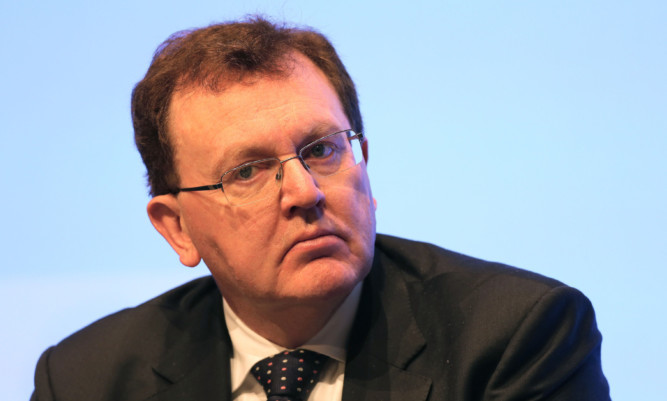The Scottish Government will be able to “top up” tax credits and child benefit payments as part of new powers coming to Holyrood, a UK Government minister has confirmed.
David Mundell said that the Scotland Bill, which is currently going through Westminster, would be a a “game-changer” that would usher in a “new era of devolution”.
For the first time MSPs will be able to set income tax rates and bands as a result of the proposals and will also get new powers over welfare – with these to come into force from April 2017.
The Scottish Secretary insisted: “We are on the threshold of a new era in devolution and the Scotland Bill will be a game-changer.”
But the Scottish Government has warned that it will not recommend MSPs approve the legislation if if believes the funding arrangements linked to the Bill are unfair.
The SNP has also been critical of UK Government plans to cut tax credits for working families, with talks due to take place today between the two governments on welfare.
Ahead of those discussions, the Scottish Secretary called on Holyrood ministers to set out both how they would use the new powers and how they would pay for any changes.
The Conservative MP said: “Scottish Government ministers will be able to design a significant part of Scotland’s welfare system and control income tax to pay for it. If they want to top up existing benefits, they will be able to. If they want to introduce payments to those in short-term need or design new benefits in those welfare areas being devolved that will also be an option available to them.
“Powers in the Scotland Bill ensure Scottish Parliament will have the means to pay for any changes, but it will have to justify them to the public, as under the new arrangements, income tax raised in Scotland will stay in Scotland and be spent in Scotland.”
Mr Mundell added: “I am looking forward to today’s meeting between UK and Scottish Government ministers. They have always been collaborative and productive and good progress has been made in working together to implement the welfare aspects of the Scotland Bill.
“Increasingly, welfare will become a shared space between the UK and Scottish Governments and it is vital we continue to co-operate to make sure we deliver the best system we can for the people of Scotland.”
The Scottish Government is today launching a paper on how the new social security powers that are being transferred north should be used, with Social Justice Secretary Alex Neil pledging: “The new system will have at its heart a set of principles and values.”
The SNP will ensure “people are treated with respect and dignity when applying for, being assessed for, and receiving disability-related benefits,” he stated.
Mr Neil also made clear his party would not “take an approach that punishes the vulnerable” and would instead focus on “fairness, accessibility and stability”.
Scottish ministers will publish a further paper by the end of the year setting out their outline vision for social security in Scotland, with Mr Neil stating: “It is clear we must provide people with relevant information so they are aware of how the system will work for them and how long decisions will take.
“It is also important that the system is fair and efficient – that the investment we all make in social security is well managed and is directed at the people who need it, in the way that will support them best.
“Through the current system many people, including carers, young people, families and those who can’t work because of disabilities or mental health, have all faced cuts and discrimination as a result of the UK Government welfare reform programme.”
Labour shadow Scottish secretary Ian Murray said: “I want the Scottish Government to have the power to create new benefits, to protect the vulnerable from Tory cuts and to raise all the money it needs for public services.”
But he added: “It is extraordinary to hear John Swinney saying he might reject these powers. It is time for the politics to stop and for the SNP Government to get on with using powers now. Thanks to concerted pressure from Labour, this SNP Government will have more power than ever before. It is time that they moved on and set out their plans for using these new powers to design a new social security system for Scotland.”
